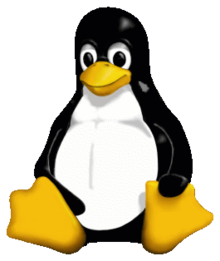Tecnical English: Linux

Linux
Linux is an open source operating system for computers. The operating system of a computer is a collection of the basic instructions that tell the electronic parts of the computer what to do and how to work. “Open source” means that everyone can see how it works and change it if they want to. This is different from “closed source,” which is software that makes it hard to change or see how it works. Windows is an example of a “closed source” operating system. A lot of the important software made for computers is made for Windows because it is more popular. There is a lot of different software for Linux and since Linux is open source it means that most of the software for it is open source too, and free. This is one of the main reasons why some people like to use Linux more than Windows.
How Linux was made
In the 1980s, many people liked to use an operating system called Unix. But because they had to pay to use it, some people tried to write a new operating system that would work like Unix but would be open source. A group of people called the GNU project wrote many different parts of a new operating system (GNU), but there was nothing that brought it all together. Then in 1991, a Finnish man named Linus Torvalds wasn’t happy with how he could get at his college from home (using Minix), so he made his own. One Day he thought after he made so much, that it would be made into an operating system and has made it. Linus then shared it out on Minix’s talk rooms. Linus first named the OS “Freax” for “free” and “freak”, using an X because it is popular in naming projects that are like Unix. Later he named it Linux which came from the name of the computer folder that his files were put in. Linus Torvalds explained how to pronounce the name Linux in 1992. The way he portrayed the pronunciation of the word Linux was Li, where the letter ‘i’ is a short ee sound; and nux, where the letter ‘u’ is also short (as in the words put or could). The name Linux was made up partly due to Minix, which was the system Linus used to create Linux. “Linux was just my working name for the thing,” he says, “and as I wrote it to replace minix on my system, the result was… Linus’ minix, [which] became Linux”. Because of the way that the new operating system was created by combining the work of the GNU project and Linus Torvalds, many people say that it’s better to use the name GNU/Linux, but most people just say “Linux”. Since then, thousands of developers and companies have worked to make Linux better.
Tux the penguin
The mascot of Linux is a cartoon penguin named “Tux”. When a person sees the penguin on software and hardware, it means that it will work with Linux, and sometimes all systems that are like Unix. The idea of the penguin came from the creator of Linux, Linus Torvalds. The image was made by a man named Larry Ewing in a competition to create a logo. The image, Tux, did not win, but it was picked as a mascot later. Tux has now become a symbol for Linux, and sometimes even for open source. He can be seen in many different places and often, when people refer to Linux, they think about Tux. Tux has even been included in many video games, such as Super Tux (like Super Mario Bros.), Tux Racer (where players race Tux down an icy hill) and Pingus (like Lemmings).
Linux distributions and software
People who want to get Linux can download it from the Internet or buy it from a store or a website. Sometimes books and magazines about Linux have a CD with Linux on it. Any certain version of Linux is called a “distribution”, or “distro”. A Linux distribution includes the basic Linux operating system, along with some extra programs that help the Linux to do different jobs. Different distributions include different extra programs. The main distributions which are used by many people include:
- Debian
- Fedora
- Gentoo
- Linspire
- Mandriva
- Red Hat Linux (now only enterprise)
- Slackware
- SuSE
- Ubuntu
People may have to pay a small amount for a distribution, to pay for the CD-ROM and to help the company to make their distribution better. In most cases where people have to pay, they are paying for the company to help the user after they install it, which is known as “support”.
Software for Linux includes:
-The Kernel and the Shell, used for converting the machine code into graphics and text.
-Apache for allowing users to run their own website.
-KDE and GNOME for desktop environments.
-OpenOffice for office work.
-Mozilla Firefox for Internet browsing.
-GIMP, Inkscape and Blender for multimedia work.
-Games such as Tux Racer and Frozen Bubble.